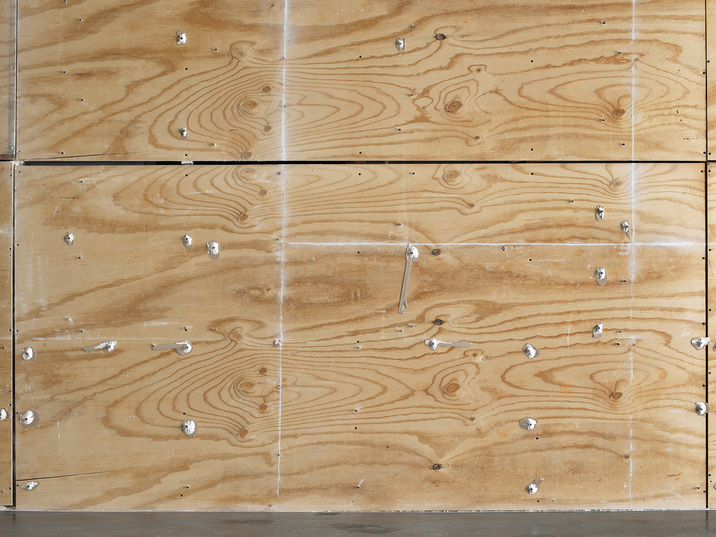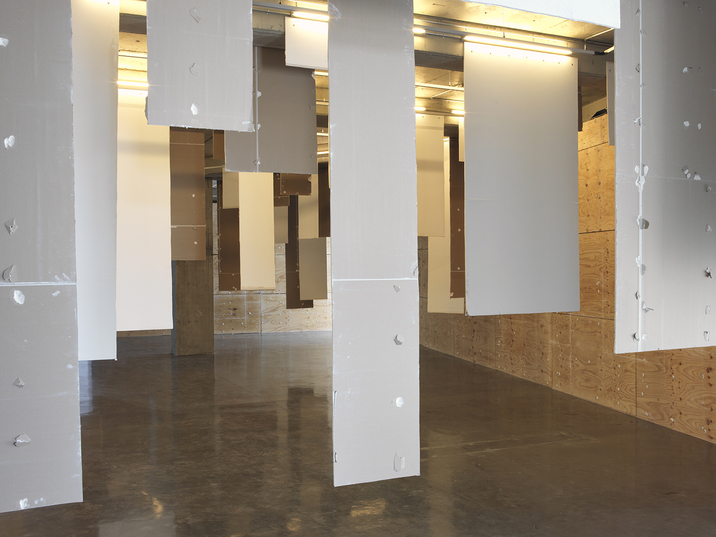Shows
Ayşe Erkmen’s “Kıpraşım Ripple”


Dirimart’s second space in Dolapdere is one year old. Its dramatic, irregular quadrilateral interior occupies half of the ground floor of a newly built office condo, the biggest commercial art space in Istanbul. The gallery is safely removed from the street with an elevated, private driveway, and casts a haughty gaze on its crummy neighborhood that is being gentrified and revived. Since the gallery opened its doors, the programming has been geared toward breaking out of Dirimart’s public image as merely the international and fair-savvy counterpart of conservative galleries of Nişantaşı, where the gallery’s original branch is still located.
In this context, “Kıpraşım Ripple”—Ayşe Erkmen’s new, “completely unsellable” show, as one gallery employee put it—was a bold gesture of a scale (and cost) that perhaps only a couple of non-profit institutions in Istanbul could accommodate. This show with a bilingual title—“kıpraşım” means “ripple” in Turkish—was also one where the artist attempted to come to terms with the gentrification machine of which Dirimart is a key component. Indeed, Erkmen’s toll for the gallery was what an exhibition space sees as most valuable: its walls.

The main space of the gallery was taken up by hanging sheetrock panels of varying heights, delicately yet forcibly ripped from the rear and right walls. Even though nothing else accompanies them visually (besides the plywood surface of the now-barren non-structural walls), “Kıpraşım Ripple” exuded a different flavor based on where the viewer stood. At the entrance, one encountered a row of panels frontally—a solemn experience, not unlike facing a tier of white flags hanging from the beams. After taking a few steps into the installation, however, another row’s imperfect rears, with traces of having been torn away from something, splinters and all, come into focus. Once you arrive at the center of the gallery, crowned by a triangulation of beams, it may finally occur to you that it is the architecture that is “rippling down.”
As if the choreography of visual commotion was not elaborate enough, the installation is complemented by a whistle-like, unmelodic noise that rises and falls. This soundtrack is, in fact, derived from the sound frequencies of a reading, comprising the names of every single shop one walks by from Pangaltı to Dolapdere—a 20-minute stroll. These shops mostly belong to tradesmen, mechanics and small producers who may have to vacate their shops soon due to rising rents.


There are predecessors to Erkmen’s quirky salute to institutional critique. This is found in other artists’ practice, such as Hans Haacke’s infamous Germania that was presented at the German Pavilion during the 1993 Venice Biennale, as well as the artist’s own—namely, when she “swapped” the ground and upper floors of Istanbul’s Yapı Kredi Kâzım Taşkent Art Gallery in 2008, rendering both floors virtually useless. The conceptual crispness and incisive criticism of such gestures are replaced by an esoteric, spatial understanding of Dirimart and its context, accompanied by an aestheticizing impulse that was often only limited to the artist’s previous site-specific installations with fabric, as in her 2005 SculptureCenter show, “Busy Colors,” in New York. Although Erkmen has expressed her aversion to “documentary art,” which delivers its critique in a literalist, professorial fashion, “Kıpraşım Ripple” reduces gentrification to an endnote of her assessment, rather than use it as a referent. This is the case with shop names twice removed from reality—once with the extraction of sound frequencies, and secondly with their interpretation into a composition.
The artist’s frustration with this locale is most poignantly visible in the small side room of the gallery, jam-packed with aluminum sculptures of different shapes and sizes. Upon closer inspection, these sculptures reveal themselves to be stacked, warped or twisted plans of the gallery itself. The difficulty of navigating this shiny jungle of a “show room” (in Erkmen’s own words) without bumping into one of the works seemed to essentialize the modus operandi of the gallery business. Even though destruction of the exhibition space may no longer be radical, its coupling with a hyperbolic exposure of the meticulously (but not always successfully) camouflaged commercial dimension of the gallery is an admirable move, albeit with a certain degree of gloom: Erkmen’s jarring juxtaposition also suggests that the white walls will be back again.

Ayşe Erkmen’s “Kıpraşım Ripple” is on view at Dirimart Dolapdere, Istanbul, until May 14, 2017.







